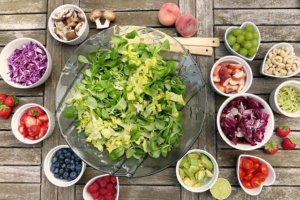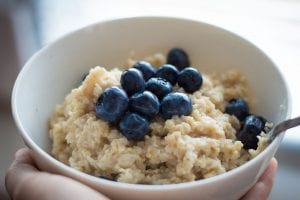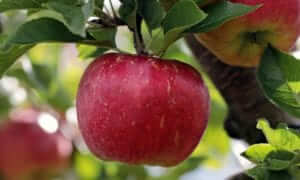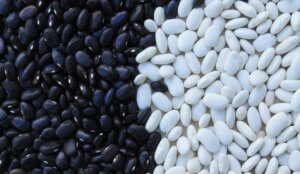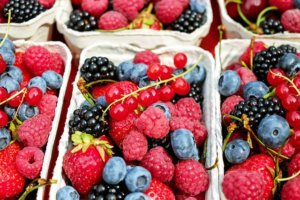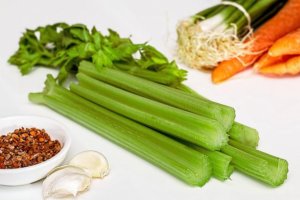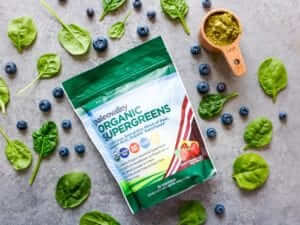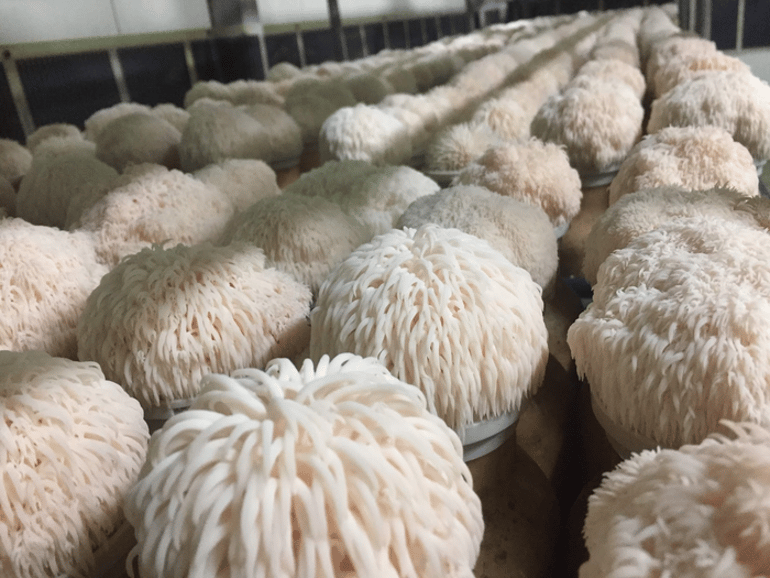The ‘Holy Grail’ of eating well may be to consume healthy foods that leave you feeling full and satisfied after eating. This is perhaps the best way to both eat the right amount of food for your body and to avoid filling up on nutrient-less “junk” foods.
In fact, foods that fill you up and satisfy hunger have multiple benefits, going far beyond appetite control.
So without further ado, here’s a closer look at the benefits of feeling full after eating, what makes certain foods more satisfying, and the most filling foods straight from nature.
The Benefits of Feeling Full & Satisfied
Why is it beneficial to feel full and satisfied after eating?
The most straightforward answer is that feeling full helps keep your appetite in line. If you’re eating foods that leave you hungry again an hour or two later, it’s easy to reach for an unhealthy snack. But if you feel nicely filled up for several hours after eating, it’s much easier to fight temptation and stick to a healthy eating plan.
Of course, one of the most obvious further benefits of this is weight management.
Hunger is a signal to your body that it’s time to eat. When it hits, you are likely to not only eat more than you should, but also to reach for whatever is closest to hand— healthy or not. This can quickly sabotage even the best weight loss or maintenance plan.
However, feeling full goes far beyond simply your weight.
In general, the most filling foods are also dense in nutrients, especially the plant-based ones. Most processed foods will leave you empty after a short period of time and don’t provide your body with much that’s good.
By choosing healthy foods that fill you up, your body gets the nutrition it needs, and cravings tend to decrease as a bonus. (After all, your body is after nutrients, though we often judge food by how it tastes. If it gets satisfied, it won’t be sending you signals to keep eating.)
And as a final note, feeling full also helps the people around you by keeping you from becoming “hangry”— irritable or bad-tempered from hunger!
What Makes a Food Filling?
The technical term for feeling full and satisfied after eating is satiety. Foods with a higher satiety index are more filling, while those with a lower score are less filling.
You can get a general idea of which foods will help you stay full for longer by looking at a few characteristics:
- Fiber Content— Fiber is greatly lacking in the standard western diet, which is unfortunate because it’s very filling. It draws water into your digestive tract as it moves through, which helps create a sensation of fullness. Studies show that it may slow digestion as well, further increasing satiety. Fiber also normalizes bowel movements, supports your gut microbiome, and may even help you live longer!
- Protein— Protein is a macronutrient that increases satiety and helps control hunger. Researchers believe it has this effect because it takes longer to digest than carbohydrates but also because it alters levels of satiety-related hormones like ghrelin and glucagon-like peptide 1.
- Low Energy Density— Foods with a low energy density tend to be high in water and fiber but low in fat and calories. Obviously, fat is an important part of the diet, so you don’t want to restrict yourself to these foods all the time, but they are generally more filling than high energy density foods.
To give you specific options to choose from, here is a list of nature’s most filling vegetables, fruits, grains, and more. As always, consider choosing organic varieties of these foods, especially those whose skin / outer layer you consume.
The Most Filling Foods Straight from Nature
Potatoes
Potatoes have been regarded as unhealthy in the past, but they are actually extremely nutritious— and very filling.
Loaded with nutrients like potassium, vitamin C, magnesium, manganese, phosphorus, and B vitamins, potatoes have decent amounts of fiber and water as well as a moderate amount of protein. When compared with 37 other foods in one study, potatoes ranked the highest for satiety.
Potatoes also contain something known as resistant starch that feeds the good bacteria in your gut and may help with blood sugar control.
Always keep the skin on your potatoes, since this is where much of the nutrition — including most of the fiber and minerals — are found.
Oats/Oatmeal
Oats are one of the most filling grains due to their high soluble fiber content. Studies have found that oatmeal, in particular, increases satiety and decreases appetite for hours after eating it.
A particular soluble fiber in oats, beta glucan, seems to be mostly responsible for these effects. The exact way it works is still being researched, but there is some indication that it may stimulate the release of satiety hormones. As an added benefit, it also supports heart health and has shown anti-diabetic properties.
Consider opting for steel cut oats, which are minimally processed, provide more nutrients than other oat varieties, and are particularly high in fiber.
Avocados
Is there anything avocados can’t do? They are one of the most nutritious fruits you can eat and one of the most filling foods as well.
Even though avocados are rich in fat (which tends to be less filling), they are also packed with fiber— almost 14 grams per avocado! This alone would help you to feel full and satisfied after eating, but avocados have an additional boost from 4 grams of protein per fruit.
Eating an avocado a day also gets you loads of nutrients like vitamin C, vitamin E, vitamin K, B vitamins, magnesium, and potassium. It’s no wonder this superfood can fight inflammation, boost gut health, and much more!
Chickpeas
Chickpeas are a great example of a high fiber food that’s also rich in plant-based protein. This combination means that chickpeas are slowly digested by your body, keeping you feeling full for longer.
Along with this fiber-protein combination, chickpeas are absolutely packed with minerals, plus a few vitamins. Not only can you make them a part of satisfying meals, hummus as an afternoon snack has been shown to increase fullness and reduce appetite. One way to fight those afternoon cravings!
Apples
Apples are a very underrated fruit. They are an excellent source of fiber, particularly a soluble type known as pectin that helps to slow down digestion and increase feelings of fullness.
In fact, apple pectin has shown many benefits beyond just filling you up. It feeds the good bacteria in your gut, appears to help with blood sugar control, aids certain gastrointestinal problems, and may even fight cancer.
Keep the skin on apples for maximum fiber and nutrients, and eat regularly for health and a satisfied appetite!
Almonds (& Other Nuts)
Nuts are another example of a high protein plant food. This protein, combined with a decent amount of fiber, is what makes them one of the most filling foods and a particularly good snack food.
There are many healthy nuts to choose from: pistachios, walnuts, pecans, etc.
However, almonds really stand out as an all-around “super nut”. Studies confirm that they can make you feel full and satisfied after consuming them, and they also have an excellent nutrient content. Just a handful of almonds is rich in manganese, magnesium, and vitamin E as well as powerful antioxidants that protect your body from inflammation and disease.
Quinoa
Quinoa — technically a seed but classified as a whole grain — is gluten-free, naturally rich in fiber ,and a source of complete protein (meaning it contains all essential amino acids). As you know by now, this combination sets it up as a food to keep you feeling full.
When it comes to fiber content, quinoa beats out many other grains and comes in at about 5 grams of fiber per cup. It’s also rich in essential minerals like iron, zinc, magnesium, and manganese as well as folate and vitamin E.
To stay filled up for even longer, pair quinoa with a denser food like avocado.
Beans (& Other Legumes)
Chickpeas aren’t the only legume that will make you feel nice and full after eating them. Most legumes have that ideal combo of fiber and protein that promotes satiety.
Beans are the perfect example of this. They pack in lots of fiber, protein, and complex carbs as well as nutrients like iron, potassium, and folate. If you find them difficult to digest (as many do), soak them before cooking thoroughly. This reduces lectin content— the cause of bean “discomfort”.
Other filling legumes include lentils and peas, which also rate high on the satiety scale.
Broccoli & Other Cruciferous Veggies
Cruciferous vegetables have numerous outstanding health benefits, and you can add them to the most filling foods list. They are loaded with fiber and have a high water content, both of which take up space in your stomach and make you feel full.
Broccoli perhaps stands out from the rest because it has a good protein content to complement the fiber. Still, you can’t go wrong with other choices like cauliflower, Brussels sprouts, or cabbage.
No matter which cruciferous vegetable you choose, you’ll also be getting cancer-fighting compounds in every serving. Steam broccoli and related veggies for maximum nutrients and digestibility.
Bananas
Bananas are one of the more filling fruits with excellent fiber and water content. They contain resistant starch (the same type that’s in potatoes), which acts as a prebiotic and may further improve satiety.
As you may know, bananas are also an excellent source of potassium and contain a surprisingly high amount of vitamin C. The resistant starch in them has even shown promise for improving insulin sensitivity and blood sugar levels.
To make a banana more filling, pair it with a protein like nuts or nut butter. For the most resistant starch, choose slightly underripe bananas.
Berries
Berries may seem somewhat surprising as a filling food. After all, you can eat a large amount of them at one time almost like candy.
However, the high fiber and low calorie nature of berries gives them a lot of staying power when it comes to appetite. This is especially the case for berries high in pectin, which is the same fiber found in apples that can slow stomach emptying and increase feelings of fullness.
For maximum fiber content, go for blackberries or raspberries, which both check in at about 8 grams per cup. Again, pair them with a protein, like nuts, to stretch out the feeling of fullness.
Chia Seeds
Chia seeds may be tiny but they are bursting with fiber and protein. They also have a unique property that truly makes them one of the most filling foods, despite their size.
If you’ve ever soaked chia seeds, you’re already familiar with this property: the ability to pull in liquid and turn it into a gel-like substance. This is due to the high soluble fiber content of the seeds and happens in your gut, too, making you feel full.
In fact, some research shows that chia seeds can absorb up to 15 times their weight it water, which slows their passage through your digestive tract and maintains that feeling of fullness. Just a tablespoon or two a day can help keep your appetite in check.
Oranges
The same study that found potatoes had the top satiety score also ranked oranges high up. They actually had the same score as apples, likely due to their high fiber— and specifically pectin— content. Oranges have a high water content as well, which also helps you to feel full after eating them.
As you probably already know, opt for whole oranges over the juice to get all their filling fiber. You’ll also be feeding your body a great amount of immune-boosting vitamin C and anti-aging carotenoid antioxidants.
Celery
Though you may think of celery as all fiber, it’s mostly made up of water. It does still have a very decent fiber content, though, with about 2 grams in 2 medium stalks. This water-fiber combination is what helps you to feel full after eating it, particularly because part of the fiber is in the form of pectin.
If you need even more reasons to eat celery, it contains powerful compounds like apigenin and kaempferol that have antioxidant power. Eat it with natural nut butter or guacamole to stay full for even longer.
Pears
Pears are a very high fiber fruit, coming in at 4-6 grams per medium fruit. The fiber is a combination of both soluble and insoluble types, including a good amount of pectin. This high pectin content (as you probably guessed) plays a big part in making pears a surprisingly filling food, particularly when paired with a protein.
To get the most amount of fiber, leave the skin on your pears. This will give you the added bonus of an antioxidant boost, particularly when eating red pears.
Adding in Greens for a Fullness Boost
Now that you know more about the most filling foods that nature provides, all that’s left is to add a variety to your diet to consistently feel full and satisfied after eating.
Of course, some days that’s easier said than done…
While it’s generally best to consume foods in their whole forms, you might want to consider having something like these Organic Supergreens from Paleovalley on hand for less-than-ideal days. The Supergreens mix contains several of the foods listed in this article (broccoli, cauliflower, berries, etc.) in convenient powdered form.
With about 1 gram of fiber in a tablespoon and tons of nutrients, you can add this mix to plain water, a smoothie, or any other liquid to quickly feel full.
